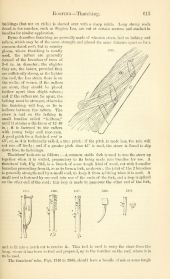Hi Mark,
Mark Cunningham wrote:
Manufacturers recommend changing out the electrolyte periodically to remove K2CO3 accumulation. ChangHong says every 7 years or 15%.
But if you replace a portion of the electrolyte annually you will keep that percentage down to manageable levels and avoid the costs, both in chems and labor/hassle, of a total electrolyte swap out.
That means you keep keep less KOH/LiOH on hand, you have less electrolyte to dispose of, refreshing your electrolyte has just become like a normal watering maintenance event.
Interesting! Another good way to think about it.
Mark Cunningham wrote:
One advantage of Nickel cells is that there is no equivalent of sulfation. I feel for the L.A. folks, having been one. It's not really a big problem to under or over charge. Within reason.
Yeah, so true. Makes them very well suited for solar.
I do like to use the charge controller.
We'll see how it works out. But I can understand what you mean.
Concept:
The program will quit charging (go to float) when both voltage (High enough) and current (Low enough) are met.
If any of these two conditions are not met it will continue charging.
But indeed for the batteries it does not matter

You mentioned it in your document, there are some hostile users that seems to recommend lead-acid over NiFe or NiCd.
I do not understand either. May-be Lithium, for mobile applications. (still don't like the fact that you cannot repair any degradation).
But disliking NiFe/NiCd AND at the same time recommending LA is beyond me

Mark Cunningham wrote:
Making / storing D.W. is a practice I strongly recommend .... one bottle of pond water mis - marketed as distilled water from WallyWorld can ruin your day. Especially if your running a L.A. bank.
Overcharging counteracts the phase change in the nickel plate that most folks think of as cell memory.
Here is a good paper on Nickel cell memory
Thanks! Good paper!
The phase change chapter starts at "Capacity Fading"
But the other parts are interesting as well for the closed systems.








